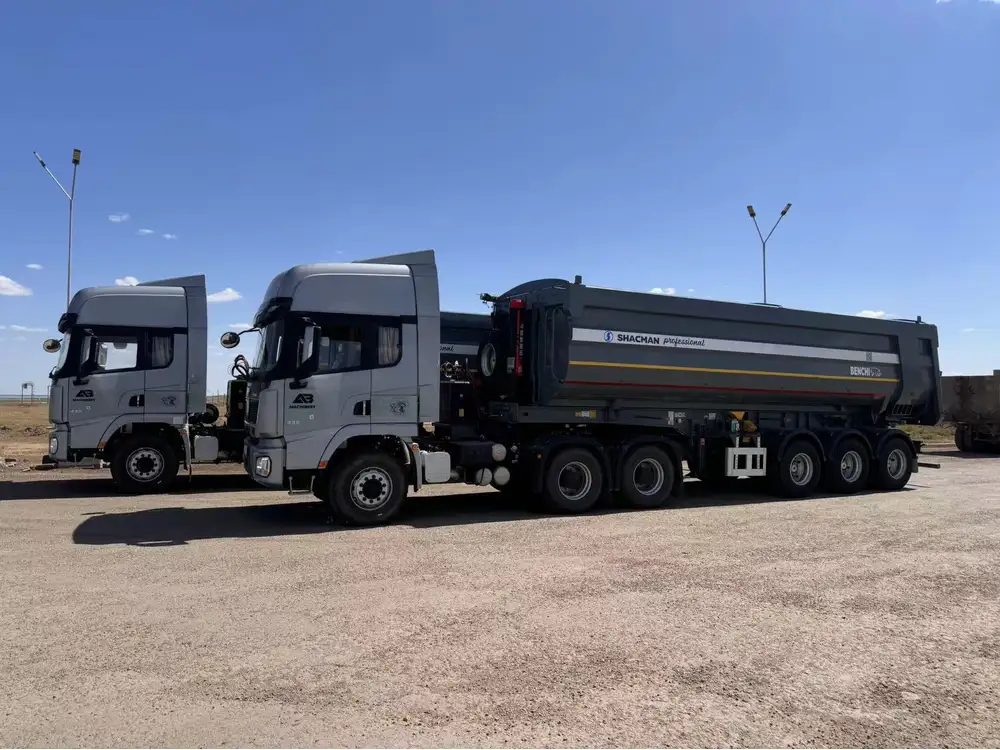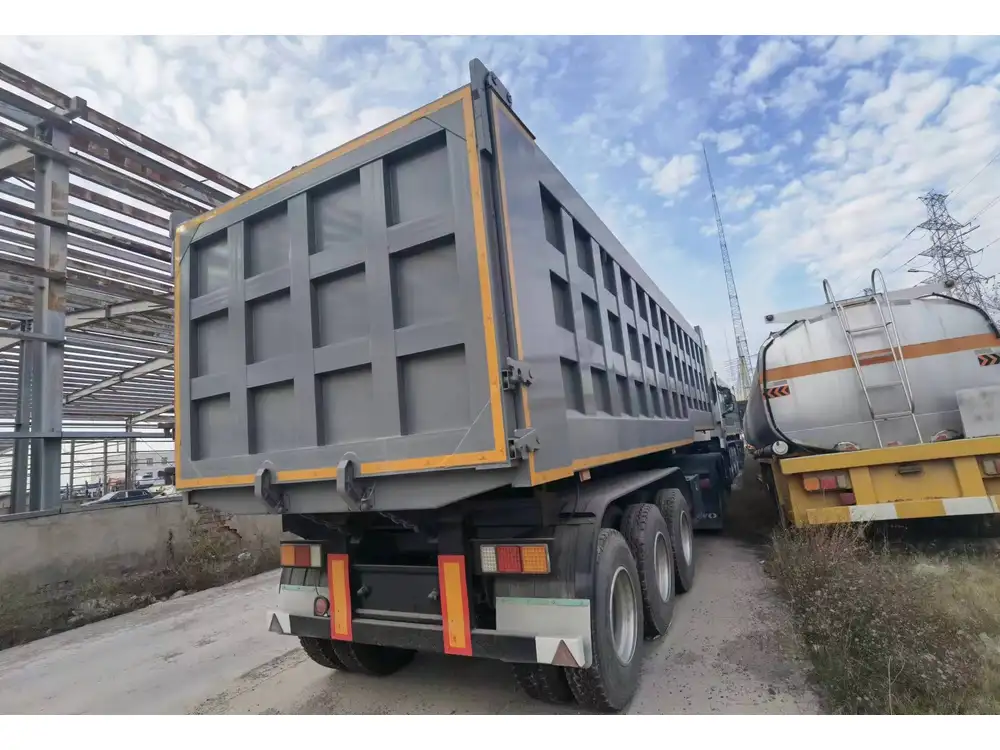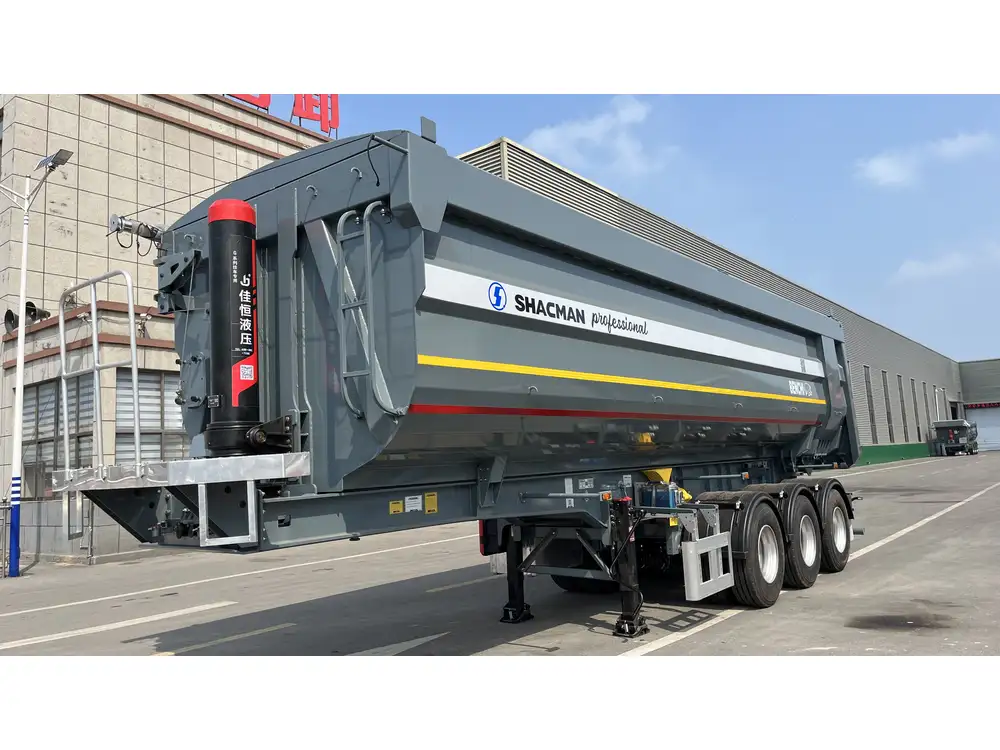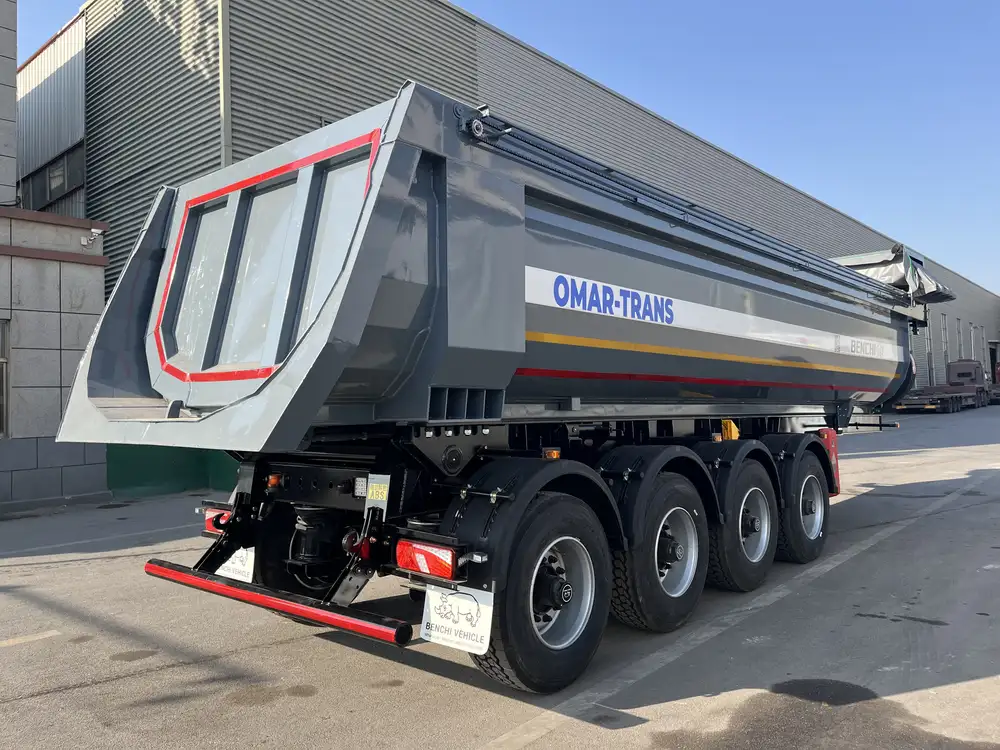Introduction
In the transportation industry, weight plays a critical role in logistics, safety, and compliance. For manufacturers, shippers, and fleet operators alike, understanding the factors that influence the weight of loaded semi-trailers is imperative. This article delves into the various aspects that determine how much a loaded semi-trailer weighs, key regulations to consider, and the implications of weight on operations.
The Basics of Semi-Trailer Weight

What is a Semi-Trailer?
A semi-trailer is a type of trailer that is designed to be towed by a truck with a fifth wheel attachment. Semi-trailers do not have a front axle and rely on the truck tractor for support. They come in various configurations depending on cargo needs, including flatbeds, refrigerated trailers, and tankers.
Unloaded vs. Loaded Weight
Unloaded Weight (Curb Weight): This represents the weight of the semi-trailer without any cargo. It includes the weight of the trailer itself, plus any additional equipment.
Loaded Weight (Gross Vehicle Weight): This figure is crucial in logistics as it measures the total weight of the truck along with the trailer and its cargo.
Key Weight Specifications
Max Weight Limits: In the United States, the Federal Motor Carrier Safety Administration (FMCSA) sets the maximum allowable weight for a loaded semi-trailer at 80,000 pounds (36,287 kg) for vehicles operating on Interstate highways.
Vehicle Class Maximum Weight (lbs) Maximum Weight (kg) Standard 5-Axle Truck 80,000 lbs 36,287 kg Single Axle Truck 20,000 lbs 9,072 kg Tandem Axle Truck 34,000 lbs 15,422 kg

Importance of Weighing
Regular weighing of loaded semi-trailers is crucial to ensure compliance with legal limits and avoid penalties. Overweight trucks can lead to costly fines and potential damage to infrastructure.
Factors Influencing Loaded Semi-Trailer Weight
1. Trailer Type
Different types of semi-trailers inherently have varying weights due to their design and materials:
- Flatbed Trailers: Generally lighter and designed for hauling heavy, oversized loads.
- Reefer Trailers: Heavier due to insulation and refrigeration units.
- Tankers: Vary widely based on liquid density; for example, a full tanker of water can weigh significantly more than a flatbed with the same load volume due to the specific gravity of water.

2. Cargo Type
The type of cargo being transported greatly influences the overall weight:
- Containerized Cargo: Standardized shipping containers can weigh anywhere from 1,500 to over 14,000 pounds when fully loaded, depending on the load.
- Bulk Cargo: Items like sand, gravel, or agricultural products have specific weight densities that impact total weight.
| Cargo Type | Average Loaded Weight (lbs) |
|---|---|
| General Freight | 5,000 – 10,000 |
| Heavy Machinery | 10,000 – 25,000 |
| Liquids | 40,000+ (depending on volume) |
3. Configuration
The semi-trailer’s configuration – including axle count and spacing – affects its operational weight. More axles can support higher loads but also increase the overall weight slightly due to additional structural components.
4. Regulations and Compliance
Adhering to Federal, State, and local weight regulations is essential:
- Bridge Law: This law limits the weight on individual axles to avoid damage to highway bridges. It often requires calculations to assess how weight is distributed across the axles.

5. Equipment & Accessories
The weight of added equipment, such as toolboxes, spare tires, and lift gates, can contribute significantly to the overall weight of a loaded semi-trailer.
Calculating Loaded Weight
Using a Weigh Station
Weigh stations are strategically located along highways to facilitate weighing large trucks and trailers prior to entering predetermined routes. Here’s how it typically works:
- Drive Onto the Scales: Most weigh stations feature dual scales to capture both axle and total vehicle weight.
- Obtain Weight Slips: Providing documentation of weight for records and compliance to transport authorities.

Manual Calculation Method
For those who wish to calculate the loaded weight manually, the following formula can be employed:
[ \text{Loaded Weight} = \text{Trailer Weight} + \text{Cargo Weight} ]Example Calculation
If a flatbed semi-trailer weighs 15,000 lbs and it carries a load of 25,000 lbs, the total loaded weight would be:
[ 15,000\, \text{lbs} + 25,000\, \text{lbs} = 40,000\, \text{lbs} ]Tools for Weighing
Here are some alternatives for weighing:
- Portable Truck Scales: These scales can be set up at job sites for quick checks.
- Onboard Weighing Systems: High-tech solutions that provide real-time weight feedback, enhancing accuracy.

The Impact of Weight Regulations on Operations
Economic Implications
Fuel Efficiency: Heavier loads can lead to increased fuel consumption. Understanding the weight can help optimize loads for better mileage.
Wear and Tear: Exceeding weight limits can lead to accelerated wear on tires, brakes, and suspensions, increasing maintenance costs substantially.
Logistical Planning: Knowledge of weight constraints aids in planning routes and scheduling deliveries to avoid fines and inconveniences.
Safety Considerations
Driver Safety: Overweight trucks are more difficult to handle, increasing the risk of accidents.
Road Infrastructure: Heavier loads can damage roads leading to increased repair costs for municipalities.
Load Security: Securing loads properly according to weight and type prevents shifting during transport, which is critical for maintaining vehicle control.

Best Practices for Managing Loaded Semi-Trailer Weights
1. Regular Training
Educate drivers on the importance of weight compliance and best loading practices. This can significantly decrease instances of overloading.
2. Frequent Weighing
Schedule regular weight checks at weigh stations or use portable systems to ensure constant compliance.

3. Optimize Loading
Distributing weight evenly across the trailer can prevent wear and ensure better handling. Utilize pallet layouts and patterns that maximize cargo space while keeping weight balanced.
4. Keep Detailed Records
Maintain meticulous documentation of all loads carried, along with their weights for audit and review. This ensures transparency and compliance with state regulations.
| Best Practice | Action Item | Benefits |
|---|---|---|
| Regular Training | Host sessions for drivers | Reduces compliance violations |
| Frequent Weighing | Schedule weigh check points | Prevents penalties |
| Optimize Loading | Implement loading checklists | Improves vehicle handling |
| Keep Detailed Records | Maintain a weight log | Enhances operational efficiency |
Conclusion
Understanding how much a loaded semi-trailer weighs is not solely a matter of compliance; it directly influences operational efficiency, cost management, and safety. By utilizing best practices, drivers and operators can optimize their logistics strategies, ensuring their fleets operate within legal limits while maintaining high standards of efficiency and safety. With the right knowledge and tools, manufacturers and haulers can navigate the complexities of semi-trailer weight regulations and thrive in the competitive transportation industry.



